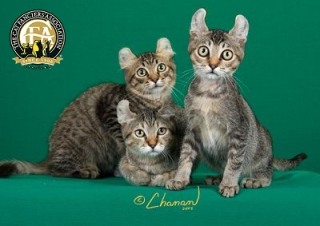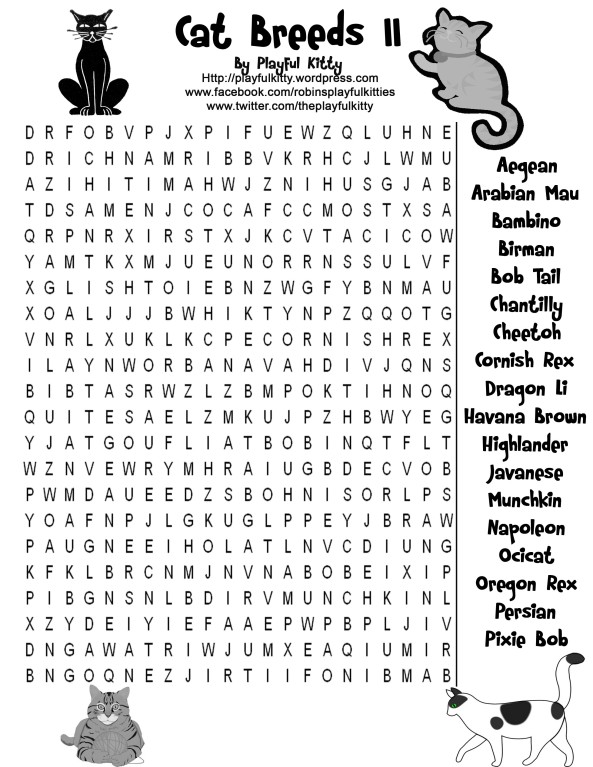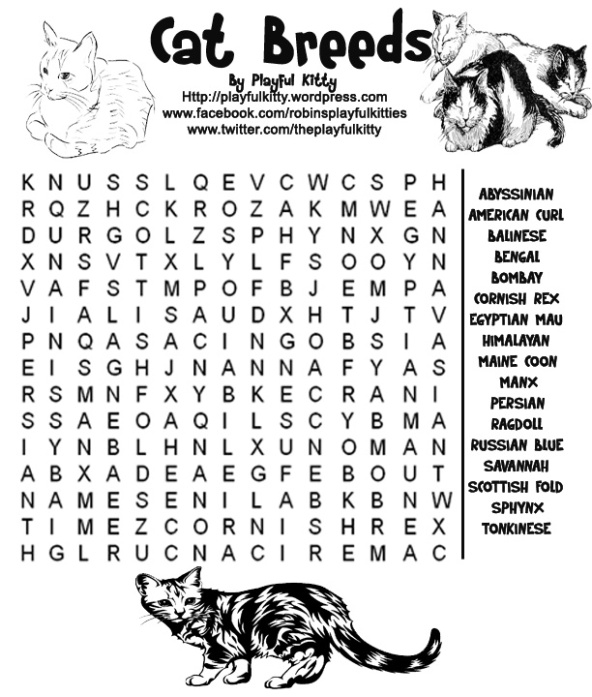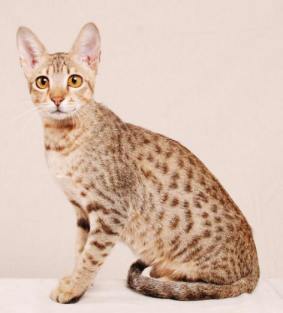
Photo courtesy of CFA.org
It all started one hot summer day in 1981 when two stray black cats ended up on the Ruga’s door. One of the cats quickly disappeared back to its life on the streets, but the other stayed and was given the name Shulamith (which is Hebrew for “black but comely). Grace Ruga loved the cat’s funny ears and after some advice from her sister (who breeds dogs) she decided to breed Shulamith and pursue formal recognition for the breed. Famed feline geneticist, Roy Robinson, confirmed that the gene that causes the curly ears was in fact a dominant gene and that the breed did not have any inherent health issues. Remarkably, by 1991 the American Curl was beginning to be recognized by the leading cat fancier associations.
“They are not just ‘decorator’ cats. You might say that they are ‘designer’ cats, perhaps even signed masterpieces of a humor-loving Creator.” – Grace Ruga

Photo courtesy of CFA.org
The American Curl’s most iconic feature is its back-turned whimsical ears. These ears are made of hard cartilage just like a human ear. American Curl kittens are born with straight ears which begin to curl around 5 days old, but do not have their permanent curl until around 16 weeks of age. The curl can be almost straight, but show cats have a curl of 90º – 180º. An American Curl can be disqualified in competition for having ear that curl back so far that they touch the back of the head.
Curly ears are not the only hallmark of the American Curl. They are also known for their silky, flat-laying coat, which can be found in both long and short-haired varieties as well as in many patterns. There is very little undercoat to the American Curl’s coat so they shed very little and don’t need much grooming. The American Curl reaches maturity at 2-3 years of age and has a medium-sized body and walnut shaped eyes
The Peter Pan of Cats

Photo courtesy of TICA.org
Fondly known as the Peter Pan of cats, the American Curl maintains its kitten-like playfulness all of its life. These cats are dog-like, energetic, curious, and they easily learn to play fetch. Not very vocal, these cats express themselves in soft voices and with gentle cooing sounds. They are very social and love to interact with humans. American Curl cats love to be around their owners and will follow them around the house. These cats are not fond of being left alone for long periods of time. They get along great with children, but as always when working with animals, they should be supervised with babies and toddlers who may play a little too rough. Pulling on the American Curl’s unique ears may cause the hard cartilage to break. On average, the American Curl is a healthy cat that will live 13 year or more.







 Designate the bedroom of the allergic person as a “Cat Free Zone.” Always keep the door to this room shut. This will help you to be able to keep the person’s bed and clothing dander free.
Designate the bedroom of the allergic person as a “Cat Free Zone.” Always keep the door to this room shut. This will help you to be able to keep the person’s bed and clothing dander free. Ov
Ov